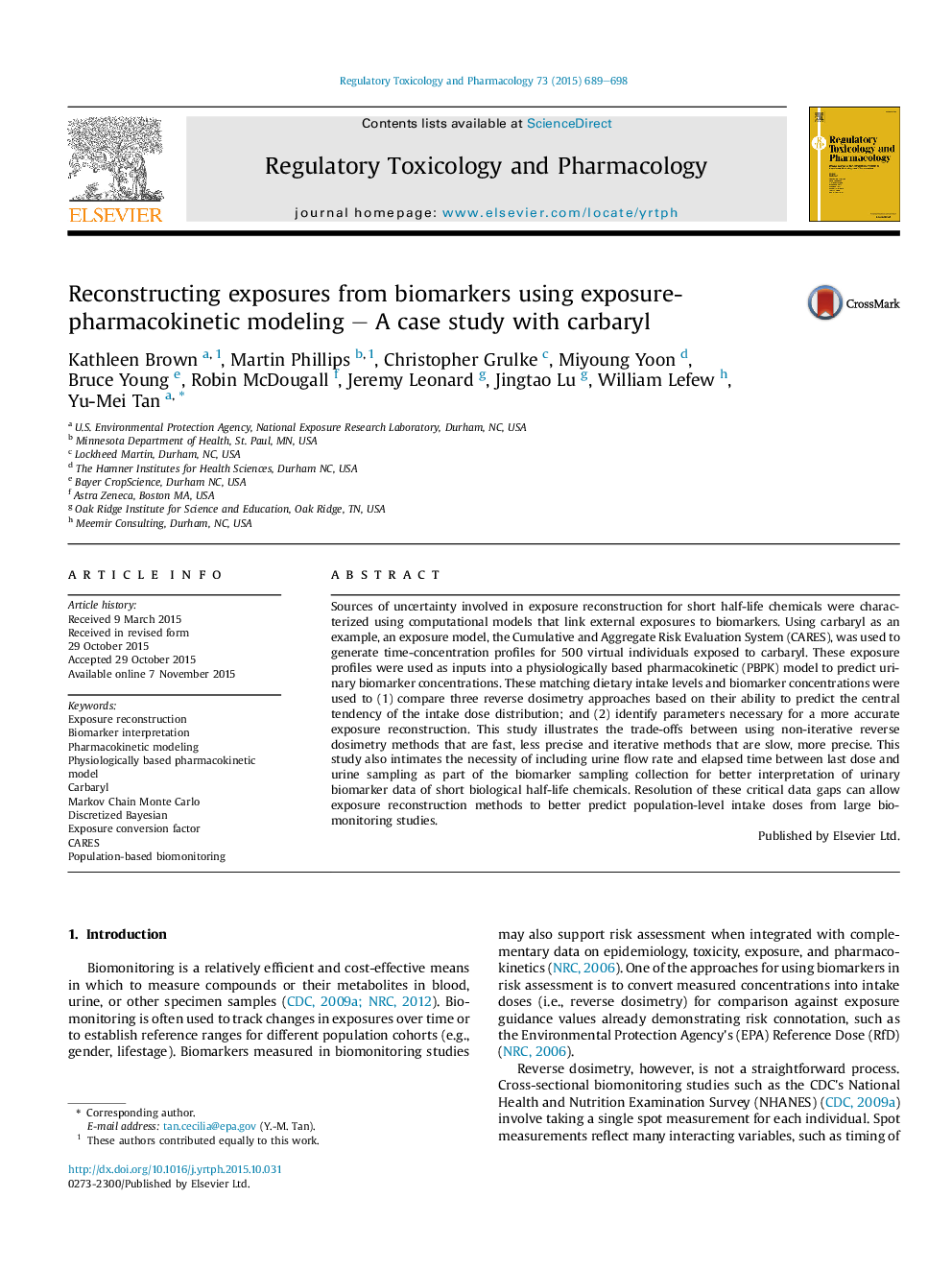| Article ID | Journal | Published Year | Pages | File Type |
|---|---|---|---|---|
| 5856205 | Regulatory Toxicology and Pharmacology | 2015 | 10 Pages |
â¢Computational models were used to evaluate methods for exposure reconstruction.â¢Critical data needs were identified in interpreting urinary biomarkers.â¢Recommendations were provided for future biomonitoring studies.
Sources of uncertainty involved in exposure reconstruction for short half-life chemicals were characterized using computational models that link external exposures to biomarkers. Using carbaryl as an example, an exposure model, the Cumulative and Aggregate Risk Evaluation System (CARES), was used to generate time-concentration profiles for 500 virtual individuals exposed to carbaryl. These exposure profiles were used as inputs into a physiologically based pharmacokinetic (PBPK) model to predict urinary biomarker concentrations. These matching dietary intake levels and biomarker concentrations were used to (1) compare three reverse dosimetry approaches based on their ability to predict the central tendency of the intake dose distribution; and (2) identify parameters necessary for a more accurate exposure reconstruction. This study illustrates the trade-offs between using non-iterative reverse dosimetry methods that are fast, less precise and iterative methods that are slow, more precise. This study also intimates the necessity of including urine flow rate and elapsed time between last dose and urine sampling as part of the biomarker sampling collection for better interpretation of urinary biomarker data of short biological half-life chemicals. Resolution of these critical data gaps can allow exposure reconstruction methods to better predict population-level intake doses from large biomonitoring studies.
